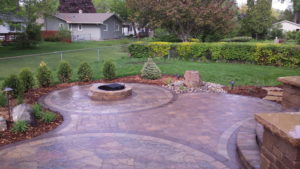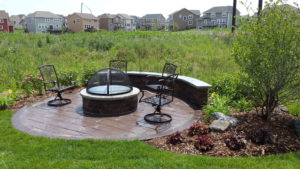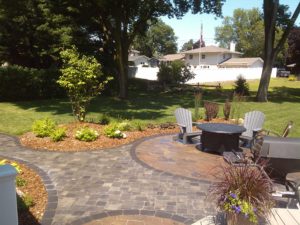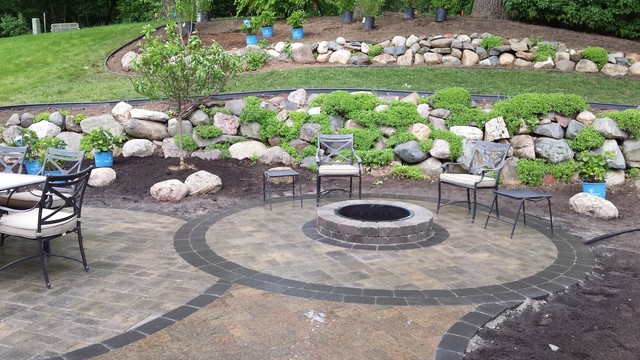 Outdoor fire pits remain one of the hottest outdoor design trends. Nothing compares to the deliciousness of relaxing with friends in the welcoming warmth of a blazing fire. A backyard fire pit adds warmth and pizazz to any dull outdoor area.
Outdoor fire pits remain one of the hottest outdoor design trends. Nothing compares to the deliciousness of relaxing with friends in the welcoming warmth of a blazing fire. A backyard fire pit adds warmth and pizazz to any dull outdoor area.
The first step is to determine if wood, gas, or an alternative fuel best suits your needs. While each of these choices is an excellent option, they may not work with the surrounding area or design plans.
Wood Burning Fire Pits
Wood fueled fires are the most popular choice. A wood burning fire pit provides the crackle, smoky smell, and warmth that brings back memories of our youth.
These fire pits can be as simple as digging a hole in the ground or as elaborate as a stone-faced unit with a hearth for seating. No gas lines are needed, and there aren’t any high fuel expenses. Not only do wood burning pits provide copious amounts of heat, the smoky taste of food just can’t be topped. If your primary interest is cooking food, wood burning pits are the way to go.
On the flip side, wood fires require the most amount of maintenance. The fire needs constant stoking, and it’s not possible to turn off a flame off when it’s time for bed. You’ll also need to contend with smoke, chopping and storing wood, and sparks and embers.
Gas Fueled Fire Pits
Gas fire pits are clean and more convenient for entertaining. They light quickly, and when you shut off the gas, the flame is out – so, no worrying about hot embers.

Natural Gas Fire Pits
A natural gas fire pit is ideal for those with the backyard capacity to install a natural gas line. Because the natural gas feeds the fire pit by a line that attaches to your home, it’s a permanent fixture in your backyard. A highlight of using a natural gas fire pit is that it never runs out of fuel, and you won’t have to find a spot to hide a tank. These fire pits are less expensive to operate and cost about one-sixth of a propane one.
Yes, natural gas is cheaper to use, but don’t forget about the expense of running the gas line into your backyard. Depending on the location, installation can be costly. It’s also permanent, so the fire pit is there to stay.
Propane Fire Pits
For those people who can’t run a gas line, or simply want more flexibility with the placement of the fire pit, propane is the way to go. Propane-fed fire pits allow for heat, ambiance, and cooking capabilities, without the need to refill gel or chop wood.
However, there are a few drawbacks to the use of propane. The fuel is costly, and there’s the underlying fear that the propane will run out while entertaining. Regrettably, food cooked over propane lacks the depth of that cooked over wood.
Gel Fueled Fire Pits
If you’re simply looking for a way to add ambiance to your backyard, gel fueled fire pits are a terrific choice. Gel fueled logs are clean, burn without producing a scent/smoke, and can be purchased for use in any fire pit design. This type of fire pit is convenient and lovely to sit around.
On the other hand, gel fueled logs don’t offer nearly as much heat. Also, they can be difficult to find in stores.
Fire pits add spice to an otherwise drab patio space. There’s no better way to make your outdoor space more useable than to furnish it with a fire pit – a cost-effective outdoor design trend that’s truly heating up!
